Supporting tomato plants is essential for healthy growth and maximum yields, whether you're growing compact determinate varieties or sprawling indeterminate types. A well-designed trellis system keeps fruit off the ground, improves air circulation, reduces disease pressure, and makes harvesting easier. From simple single-stake solutions to elaborate archway structures, there's a trellis design to suit every garden space, budget, and aesthetic preference. Modern gardeners can choose from traditional wooden frameworks, innovative PVC constructions, sustainable bamboo designs, or sturdy metal panels. The key is matching your trellis choice to your tomato variety, garden layout, and maintenance preferences for optimal growing success.
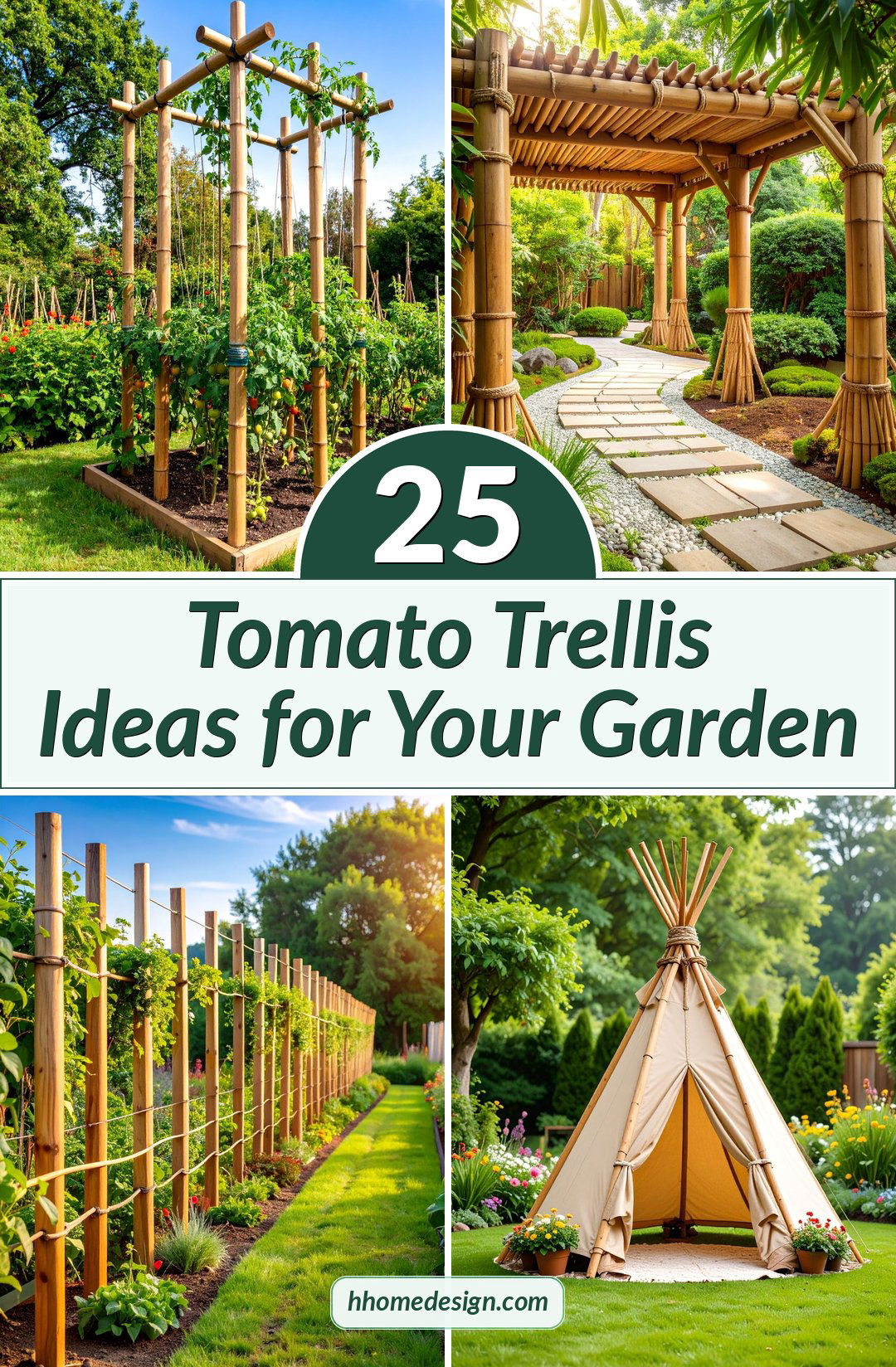
1. Bamboo Tower Trellis with Cross Supports
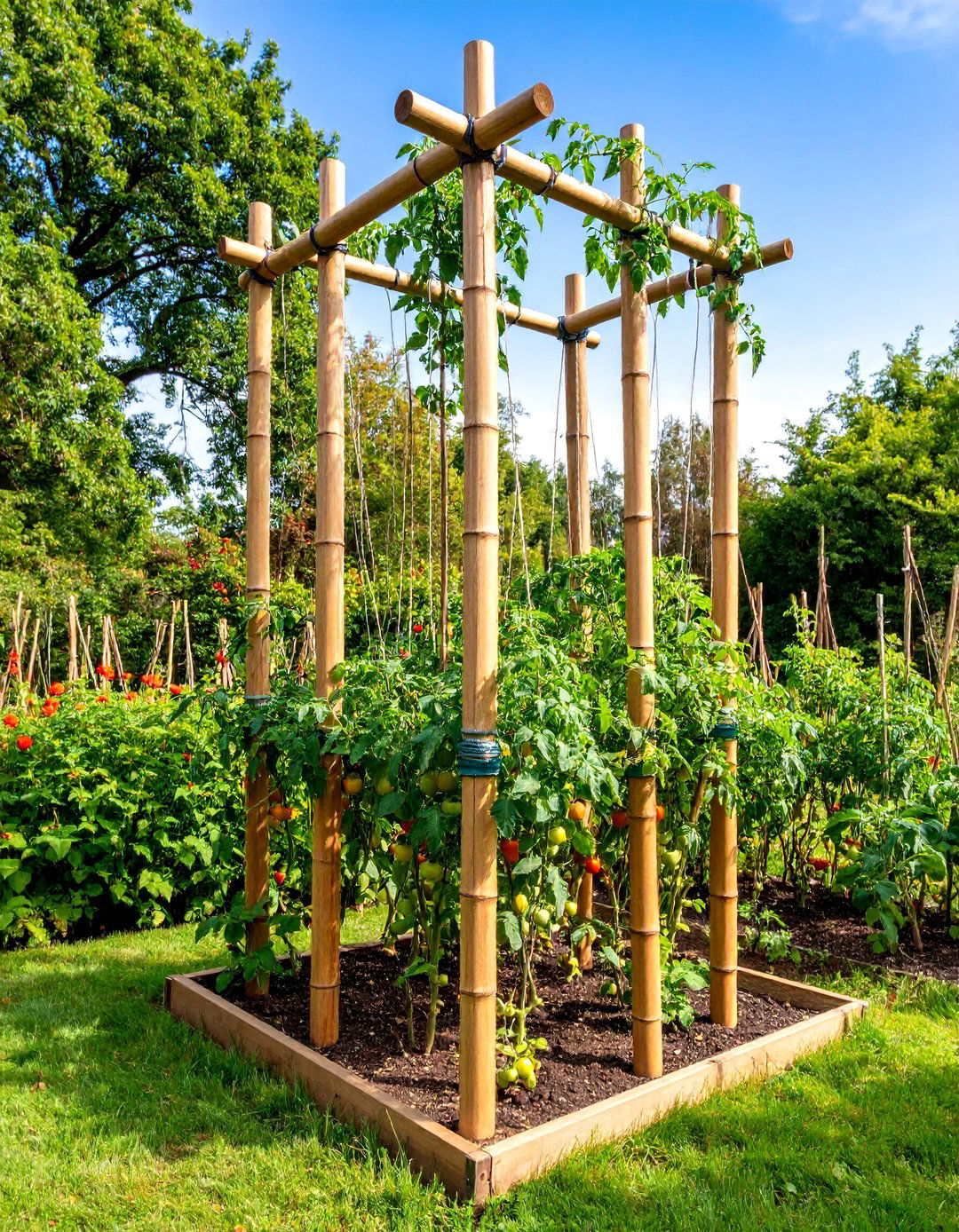
Creating a bamboo tower involves securing four 8-foot bamboo poles together at the top while spreading them evenly at ground level. Cross-pieces of varying lengths connect the poles horizontally at different heights, forming a stable pyramid structure. Start with four 28-inch pieces at the base, then add four 14-inch pieces higher up for additional support. This natural-looking design provides excellent stability for indeterminate tomatoes while maintaining an attractive garden aesthetic. The bamboo weathers beautifully over time and can be composted after several seasons of use. Position one plant at the center and train branches outward through the framework for optimal growth.
2. Florida Weave Horizontal String System

The Florida weave creates a strong support wall using stakes placed every 2-3 feet along your tomato row with horizontal twine woven between plants and posts. Drive wooden or metal stakes 12 inches deep, leaving 5-6 feet above ground. Starting 8 inches from soil level, tie twine around the first stake and weave it horizontally past each plant, looping around stakes as you progress. Add new rows of twine every 6-8 inches as plants grow taller. This method efficiently supports multiple plants while allowing excellent air circulation and easy harvest access from both sides of the row.
3. PVC Pipe A-Frame Trellis Structure

Build a sturdy A-frame using PVC pipes connected with elbow joints to form two triangular sides joined by horizontal crossbars. Use 1-inch diameter PVC for the main frame with ¾-inch pipes for cross supports. The frame should measure approximately 6 feet wide at the base and 7 feet tall at the peak. Anchor the structure with rebar driven through the bottom pipes into the ground. This design accommodates multiple plants on both sides while providing excellent stability in windy conditions. The lightweight construction allows for easy seasonal assembly and storage, making it perfect for temporary installations.
4. Cattle Panel Arch Support System

Create an impressive growing tunnel by bending a 16-foot cattle panel into an arch shape and securing both ends with T-posts driven 18 inches deep. The galvanized steel construction provides decades of durability while supporting heavy fruit loads. Plant tomatoes along both sides of the arch, allowing vines to climb up and over the structure. This design maximizes vertical growing space while creating an attractive garden focal point. The 6-inch square openings provide easy access for harvesting and maintenance. Add horizontal support wires if needed for extra stability in high-wind areas.
5. Vertical String Drop-Down Trellis

Install a horizontal support wire or wooden beam between two sturdy posts, then hang individual strings down to each tomato plant. Secure the bottom of each string with a landscape staple or small stake near the plant base. As tomatoes grow, twist the main stem around the string weekly, allowing the plant to climb naturally. This greenhouse-style method works exceptionally well for indeterminate varieties, providing individual support for each plant while maximizing vertical growing space. Use biodegradable jute or cotton string that can be composted with the plant at season's end for easy cleanup.
6. Wooden Ladder Trellis Framework
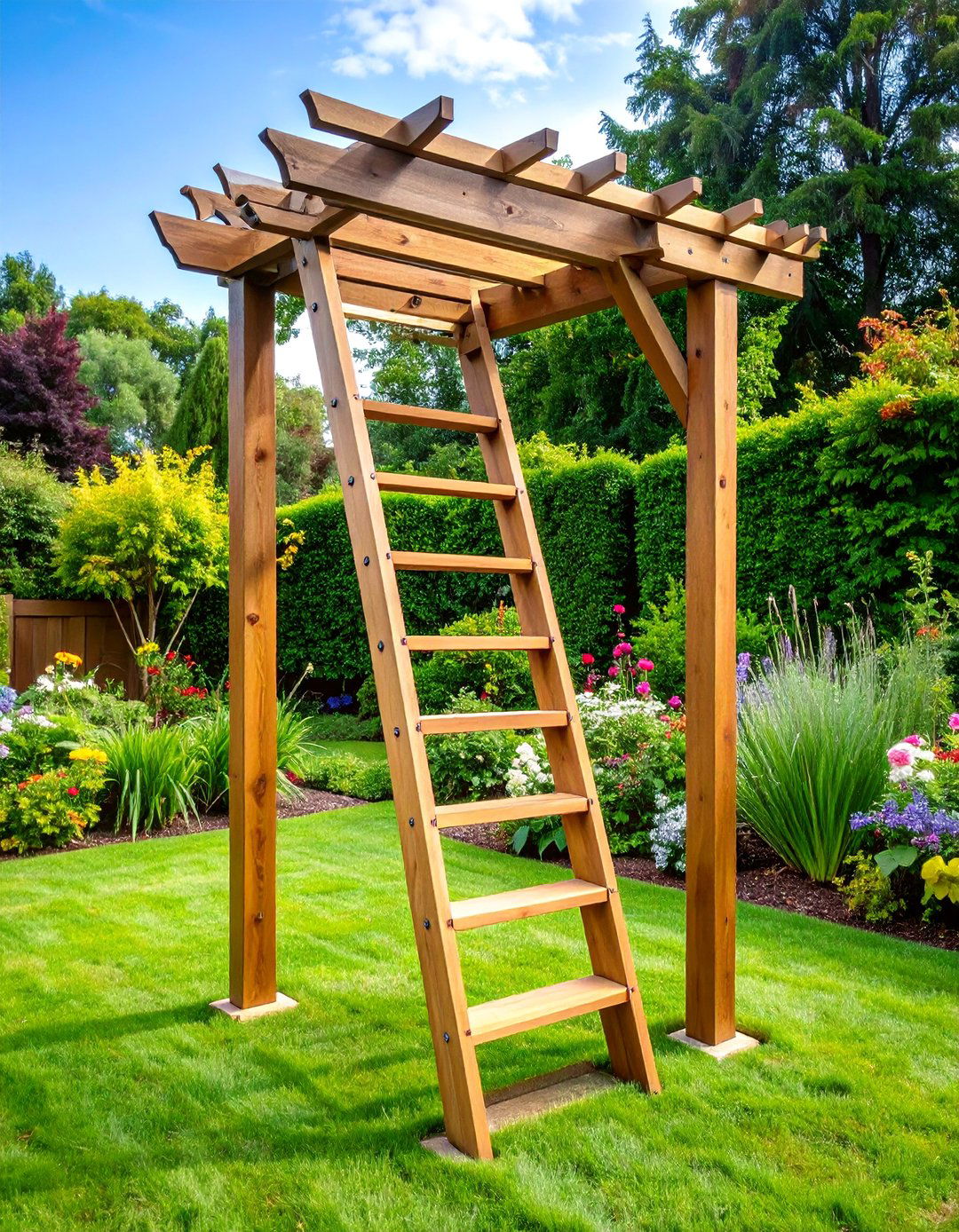
Construct a ladder-style trellis using two vertical posts connected by horizontal rungs spaced 12 inches apart. Use cedar or pressure-treated lumber for longevity, with 2x4 posts and 2x2 rungs. The structure should stand 6-8 feet tall depending on your tomato varieties. Secure the base posts 2 feet deep in the ground or attach to raised bed corners. Train tomato vines to weave through the ladder rungs as they grow, creating a living wall effect. This design provides excellent support while maintaining a clean, organized appearance that complements formal garden designs beautifully.
7. Concrete Wire Mesh Cylinder Cage
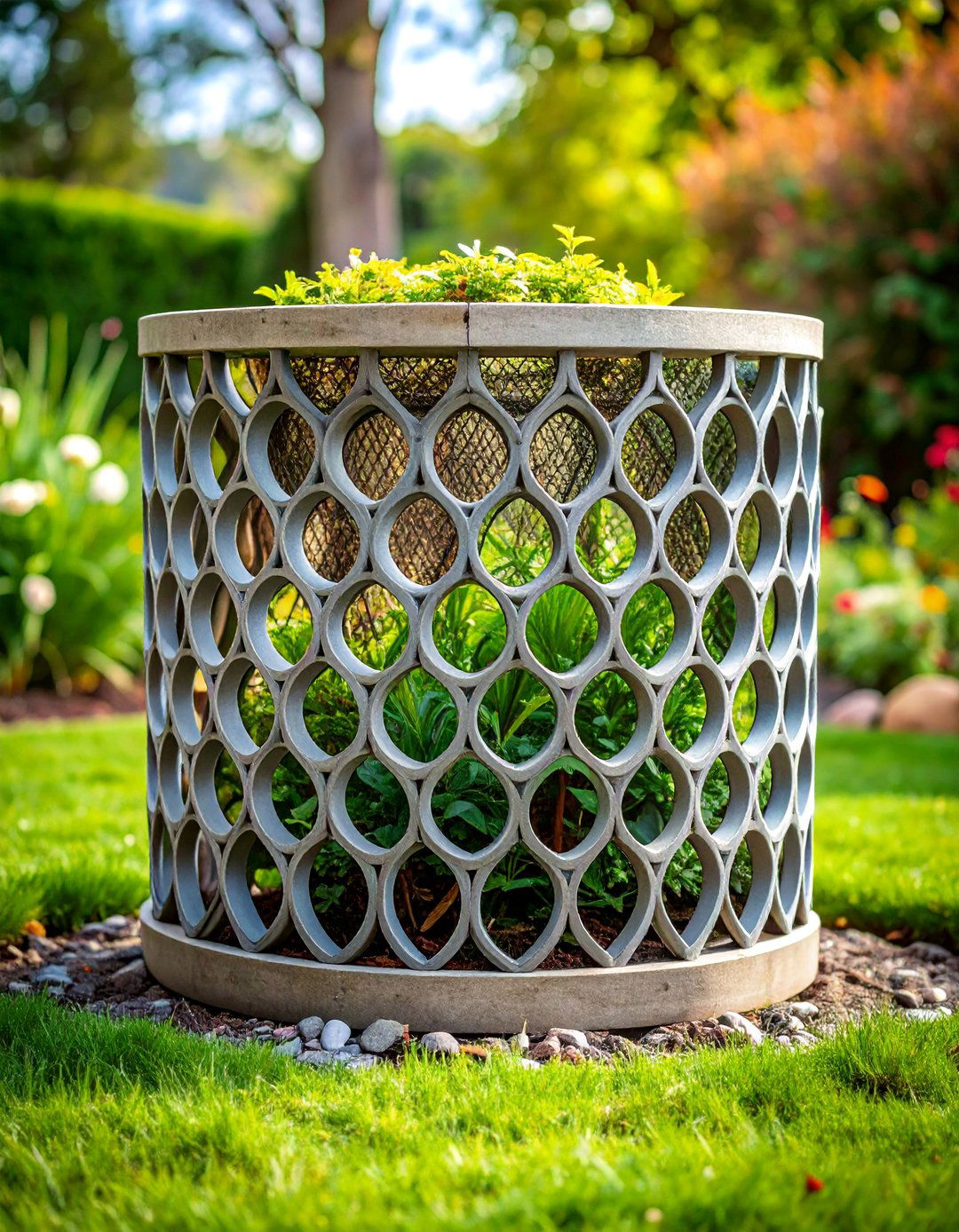
Roll concrete reinforcing wire into cylinders to create incredibly strong individual plant cages. Cut 5-foot sections of 6-inch mesh wire and form circles approximately 2 feet in diameter. Secure the seam with wire ties or zip ties. The heavy-gauge construction easily supports the largest indeterminate varieties without bending or collapsing. Drive rebar stakes around the perimeter for additional wind resistance. These cages provide 360-degree support while allowing easy access for pruning and harvesting. The large mesh openings accommodate hands and tools, making maintenance simple throughout the growing season.
8. T-Post Single Plant Support System

Drive galvanized T-posts 12 inches deep next to each tomato plant, leaving 5-6 feet above ground for vine support. These heavy-duty steel posts provide unshakeable support for even the largest plants. Secure the main stem to the post using soft garden ties or reusable clips, adding new ties every 8-10 inches as the plant grows. Prune to maintain 1-2 main leaders for optimal support. T-posts offer decades of service life and can be easily repositioned for crop rotation. Their narrow profile minimizes garden space usage while providing maximum strength and stability.
9. Inverted V-String Trellis Design

Create triangular support sections by lashing bamboo poles together in inverted V-shapes, then connecting multiple sections with a horizontal top rail. Space the V-sections 3-4 feet apart along your tomato row. Hang vertical strings from the top rail down to individual plants, providing dedicated support for each vine. This design combines the strength of a rigid framework with the flexibility of string training. The angled supports resist wind pressure better than vertical posts while creating an attractive geometric pattern in the garden landscape.
10. Spiral Wire Tomato Support Tower

Fashion a unique spiral support by wrapping heavy-gauge wire around a central post in a ascending helical pattern. Start with a 6-foot wooden or metal stake driven 18 inches deep. Begin the wire spiral 6 inches from ground level, making complete circles every 8 inches up the post. The spiral provides continuous support as tomato vines grow, eliminating the need for frequent tying. Train the main stem to follow the spiral path naturally. This design works particularly well for cherry tomato varieties that produce long, continuous growth throughout the season.
11. Hog Panel Leaning Trellis System
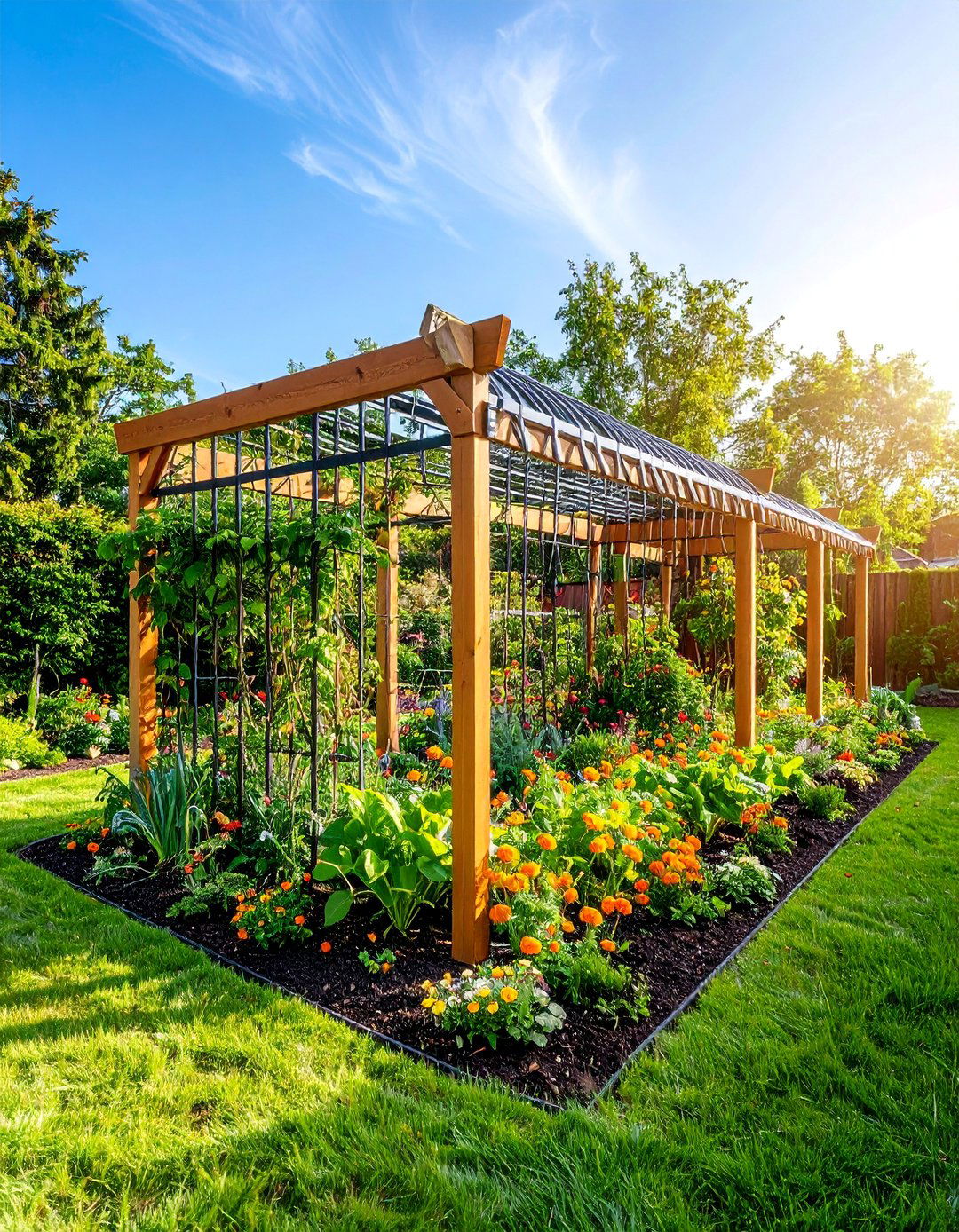
Install fence posts on one side of your planting bed and lean 16-foot hog panels against them at a 45-degree angle. This creates an easily accessible slanted growing surface perfect for larger gardens. Secure the panels to posts with wire ties and anchor the bottom edge with landscape stakes. Plants grow up the angled surface, making harvesting comfortable without bending. The slanted design also improves sun exposure for lower branches while maintaining excellent air circulation. This method efficiently supports multiple plants with minimal materials and provides professional-looking results.
12. Wooden Obelisk Tower Structure
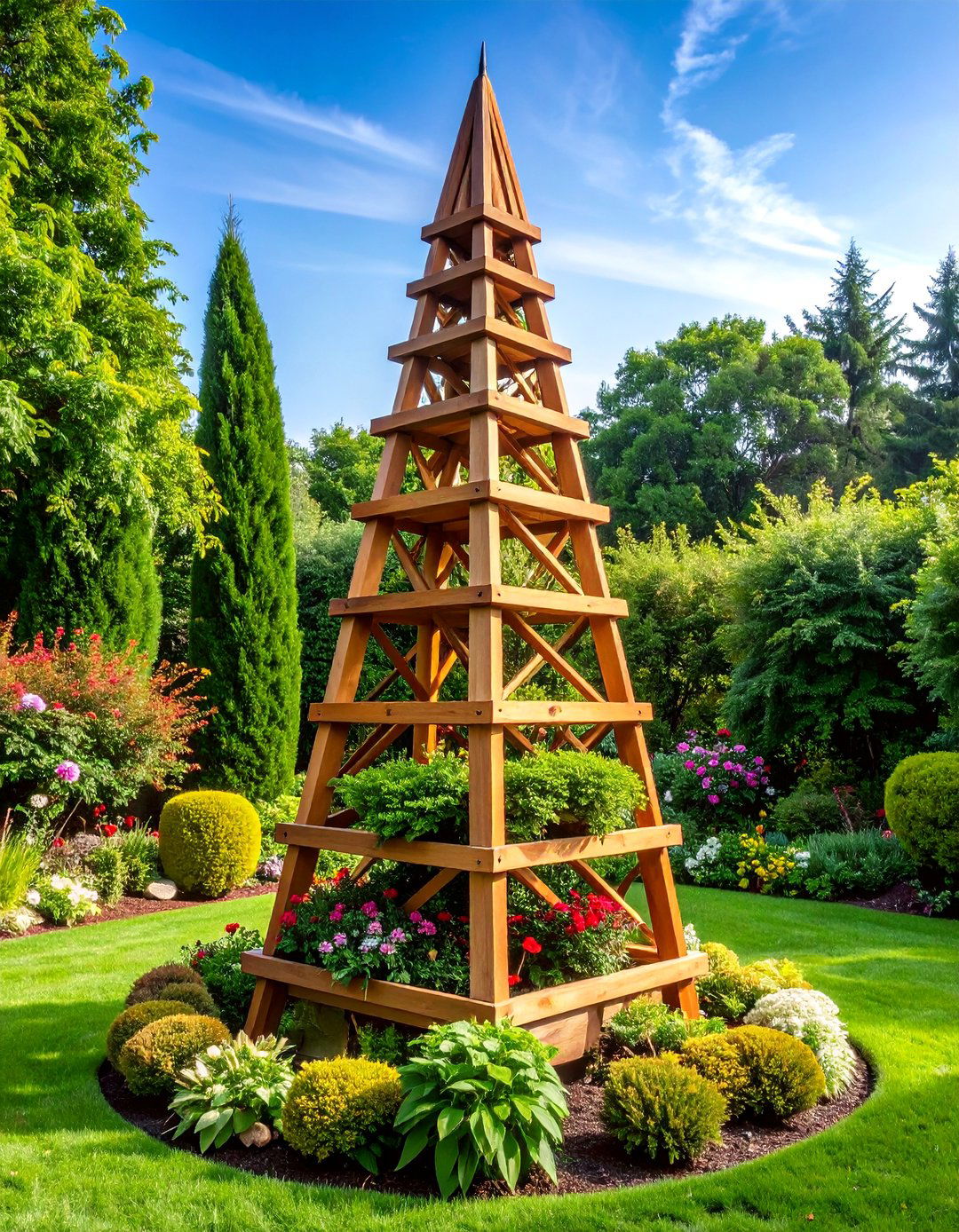
Build an elegant four-sided pyramid using cedar strips or bamboo poles joined at the top and spread wide at the base. Create a framework approximately 3 feet wide at the bottom tapering to a point 6-7 feet high. Add horizontal cross-braces every 18 inches for plant training and structural stability. This classic design serves as both functional support and attractive garden architecture. Position one vigorous indeterminate plant at the center and train branches outward through the framework. The obelisk provides 360-degree support while creating a striking vertical accent in any garden setting.
13. EMT Conduit Frame Trellis
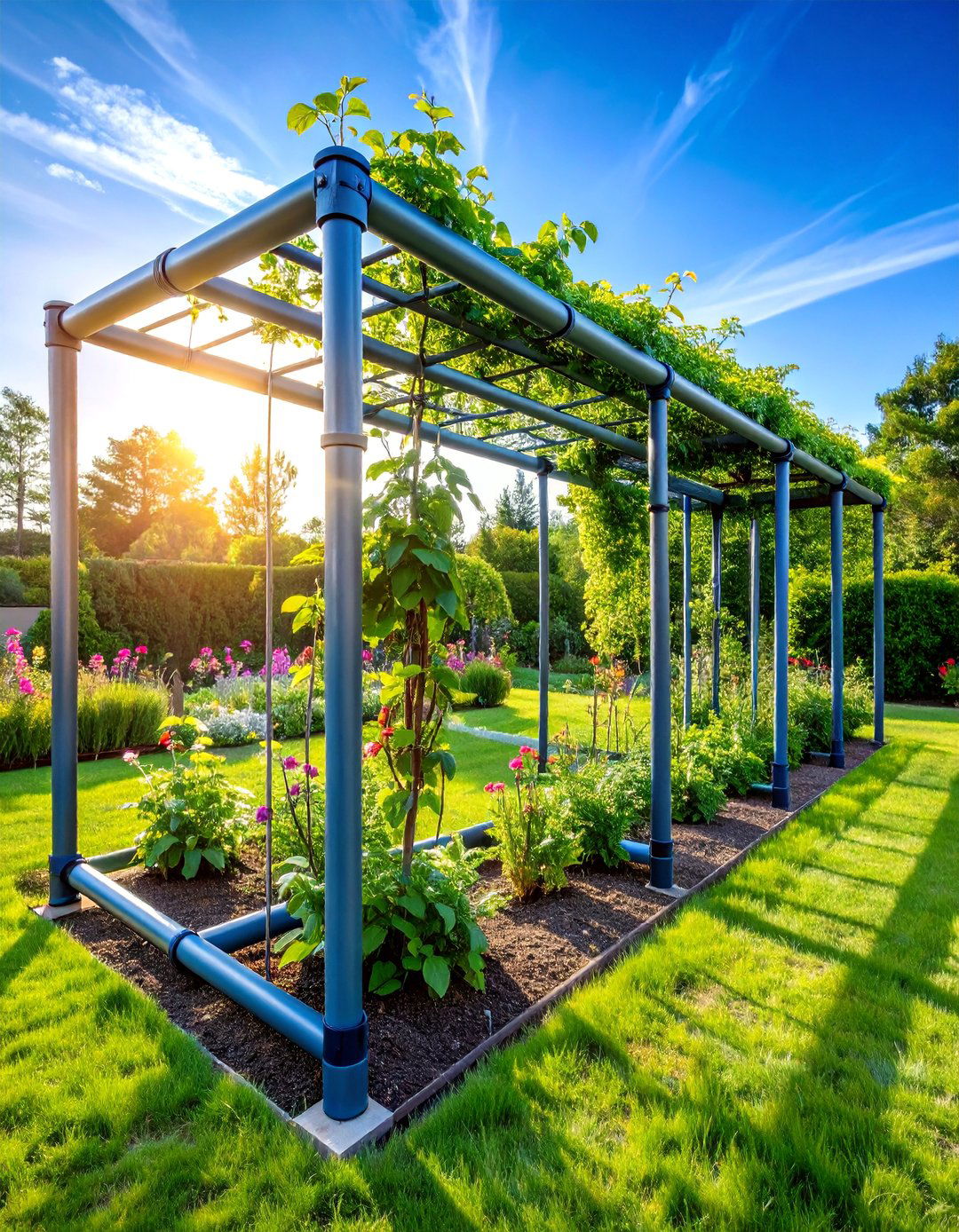
Construct a professional-grade trellis using electrical conduit and specialized connectors for a modular, reusable system. Create rectangular frames using 90-degree connectors at corners and T-connectors for cross-braces. The lightweight steel construction provides excellent strength while remaining easy to assemble and modify. Attach trellis netting or wire mesh to the frame for plant support. This system can be expanded indefinitely by adding more sections and customized for any garden layout. The galvanized coating resists rust while maintaining a clean, modern appearance that complements contemporary garden designs.
14. Stake and Weave Hybrid System

Combine the stability of individual stakes with the efficiency of horizontal weave systems by placing stakes every 18 inches and running multiple levels of twine between them. Drive 8-foot wooden stakes 2 feet deep, then secure tomato plants to individual stakes while weaving horizontal support lines at 12-inch intervals. This dual-support method provides both individual plant anchoring and group stability. The system accommodates various plant sizes while maintaining excellent air circulation and harvest access. Regular pruning to 3-4 main stems per plant optimizes the support structure's effectiveness.
15. Cattle Panel Cylinder Cage
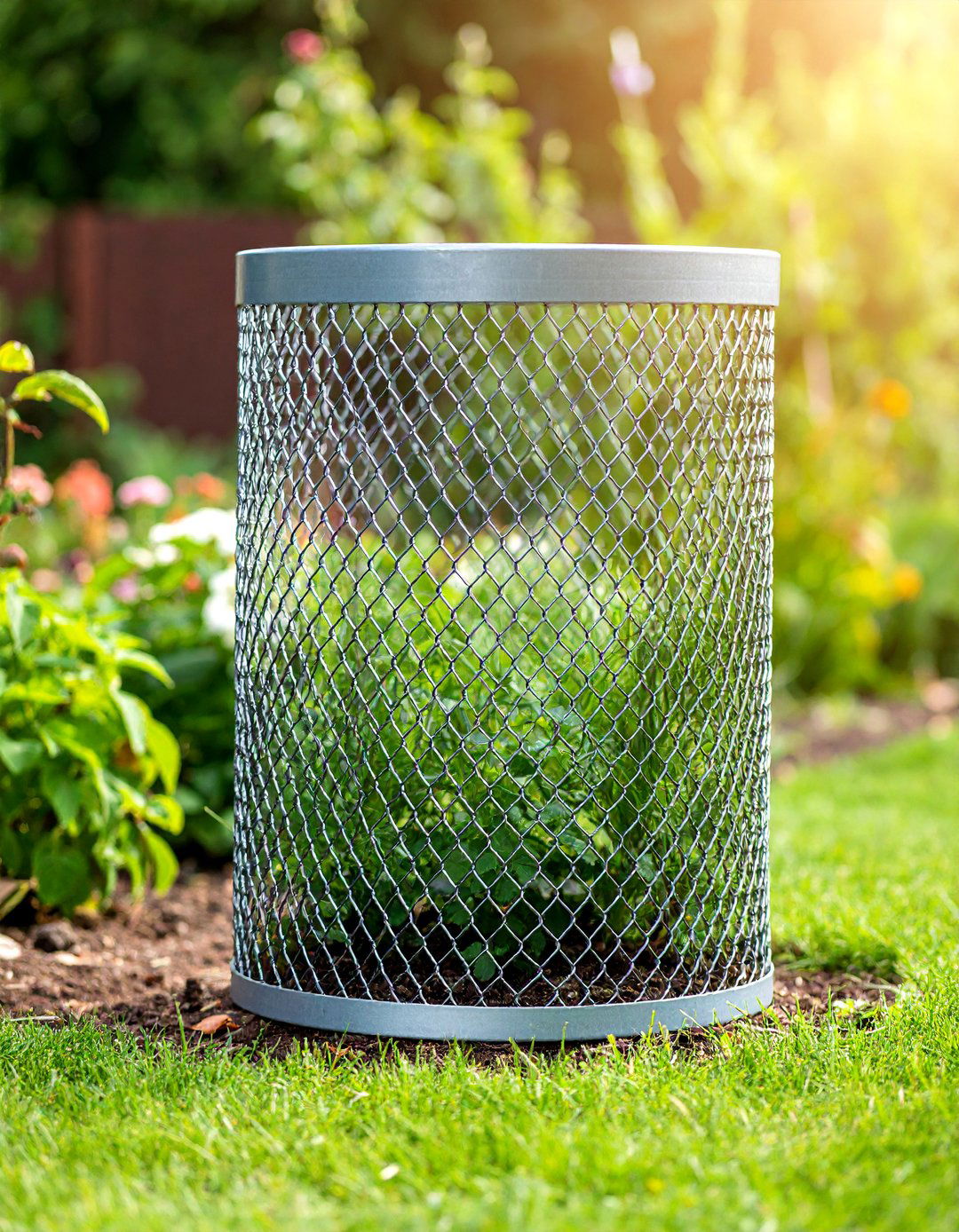
Cut cattle panels into 8-foot sections and curve them into cylinders for incredibly strong individual plant supports. These heavy-duty cages provide unparalleled stability for large indeterminate varieties. Secure the seam with wire ties and anchor with rebar stakes if needed. The 6-inch grid spacing allows easy access for pruning and harvesting while supporting heavy fruit loads. These professional-grade cages resist wind damage and last for decades with minimal maintenance. Position one plant per cage and allow natural branching within the protective structure for maximum fruit production.
16. Japanese Bamboo Lashing Technique

Create sturdy bamboo structures using traditional Japanese lashing methods that require no hardware or permanent connections. Drive vertical bamboo poles into the ground and add horizontal cross-pieces secured with specific knot-tying techniques using natural fiber rope. This sustainable approach creates beautiful, functional trellises that can be completely composted at season's end. The lashing technique allows for custom sizing and modifications throughout the growing season. The natural materials weather gracefully while providing excellent plant support and adding authentic Asian garden aesthetics to any landscape.
17. Folding Wooden Ladder Cage

Build hinged wooden ladder sections that fold together to create adjustable cages for easy storage and transport. Construct two identical ladder frames with 3-4 rungs each, then connect them with hinges on one side and hook-and-eye latches on the other. Use cedar or pressure-treated lumber for weather resistance. This design provides excellent support for determinate varieties while folding completely flat for winter storage. The hinged construction allows diameter adjustment to accommodate different plant sizes and makes installation around existing plants simple and non-invasive.
18. Rebar and Wire Mesh Hybrid
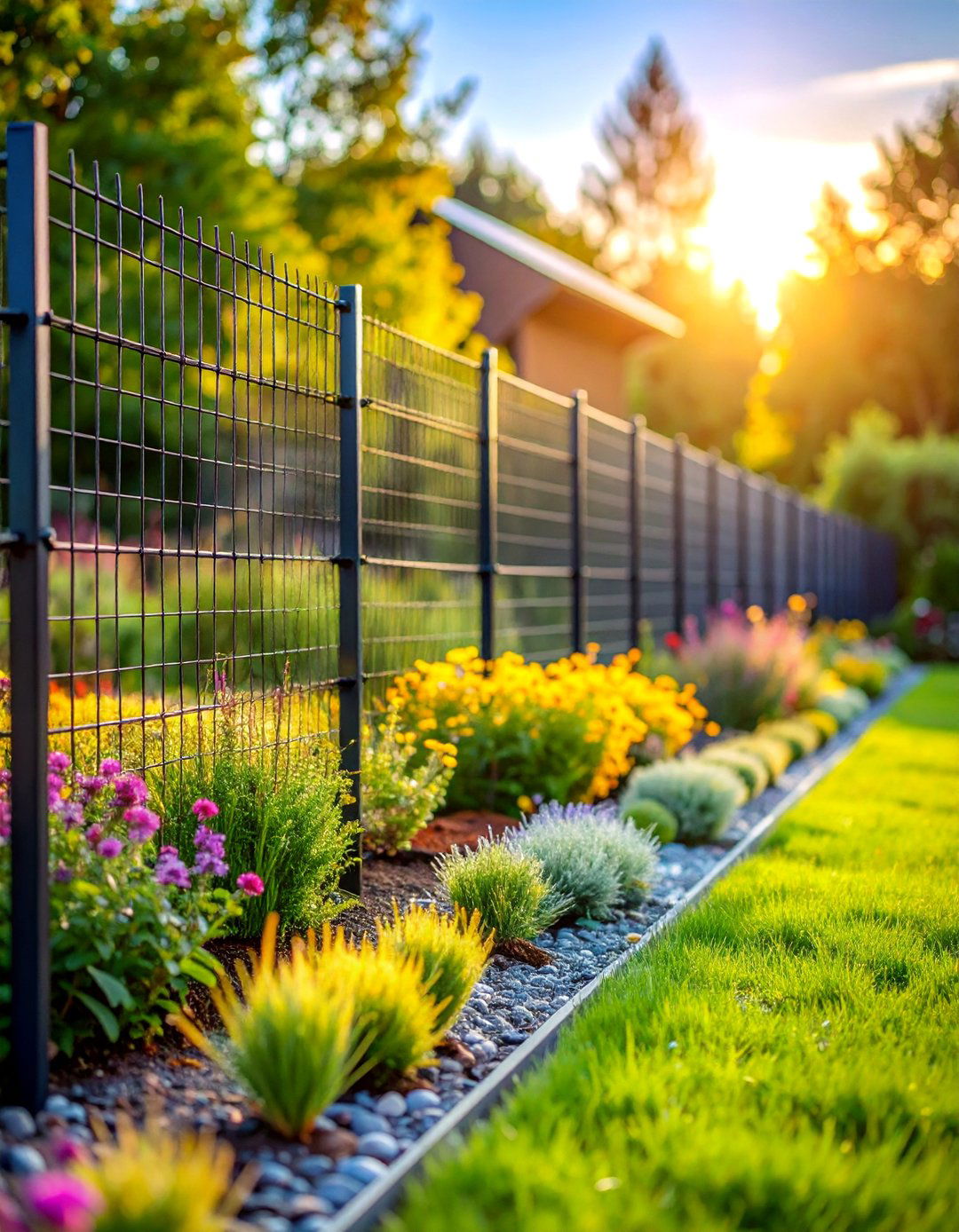
Combine the strength of rebar stakes with the versatility of wire mesh panels for ultimate durability and customization. Drive 6-foot rebar stakes every 4 feet and attach wire mesh panels between them using wire ties. This creates a continuous support wall that can follow any garden configuration. The rebar provides unshakeable anchoring while the mesh offers multiple attachment points for growing vines. This professional-grade system resists storm damage and provides decades of service. The modular design allows easy reconfiguration for changing garden layouts and crop rotation requirements.
19. PVC Pipe Grid Framework

Create a three-dimensional growing matrix using PVC pipes and connectors to form multiple levels of support grids. Start with a base rectangle and add vertical corners posts, then create additional rectangular levels every 18 inches using T-connectors. This cube-like structure provides comprehensive support for multiple plants within one framework. The lightweight construction allows easy assembly and seasonal storage while providing professional-grade plant support. Customize the dimensions to fit your garden space and accommodate different plant spacing requirements for optimal growing conditions.
20. Teepee Pole Structure System

Arrange 8-foot poles in a traditional teepee configuration, securing them together at the top with rope or wire. Use wooden stakes, bamboo poles, or even repurposed materials like old fence posts. The teepee provides natural support for vine training while creating attractive vertical interest in the garden. Space the poles evenly around a 4-foot diameter circle and plant 2-3 tomato plants around the perimeter. This design works especially well for cherry tomato varieties that produce long vines. The rustic appearance complements cottage garden styles while providing excellent structural stability.
21. Arched Tunnel Greenhouse Frame

Construct a tunnel-style growing structure using flexible materials bent into semicircular arches and connected with horizontal supports. Use PVC pipe, conduit, or even flexible branches to create the arch framework. Cover with trellis netting for plant support or plastic sheeting for season extension. This design maximizes growing space while providing protection from wind and weather. Plant tomatoes along both sides of the tunnel and train them up and over the arch structure. The enclosed environment creates ideal growing conditions while making efficient use of garden space.
22. Welded Wire Panel Trellis Wall
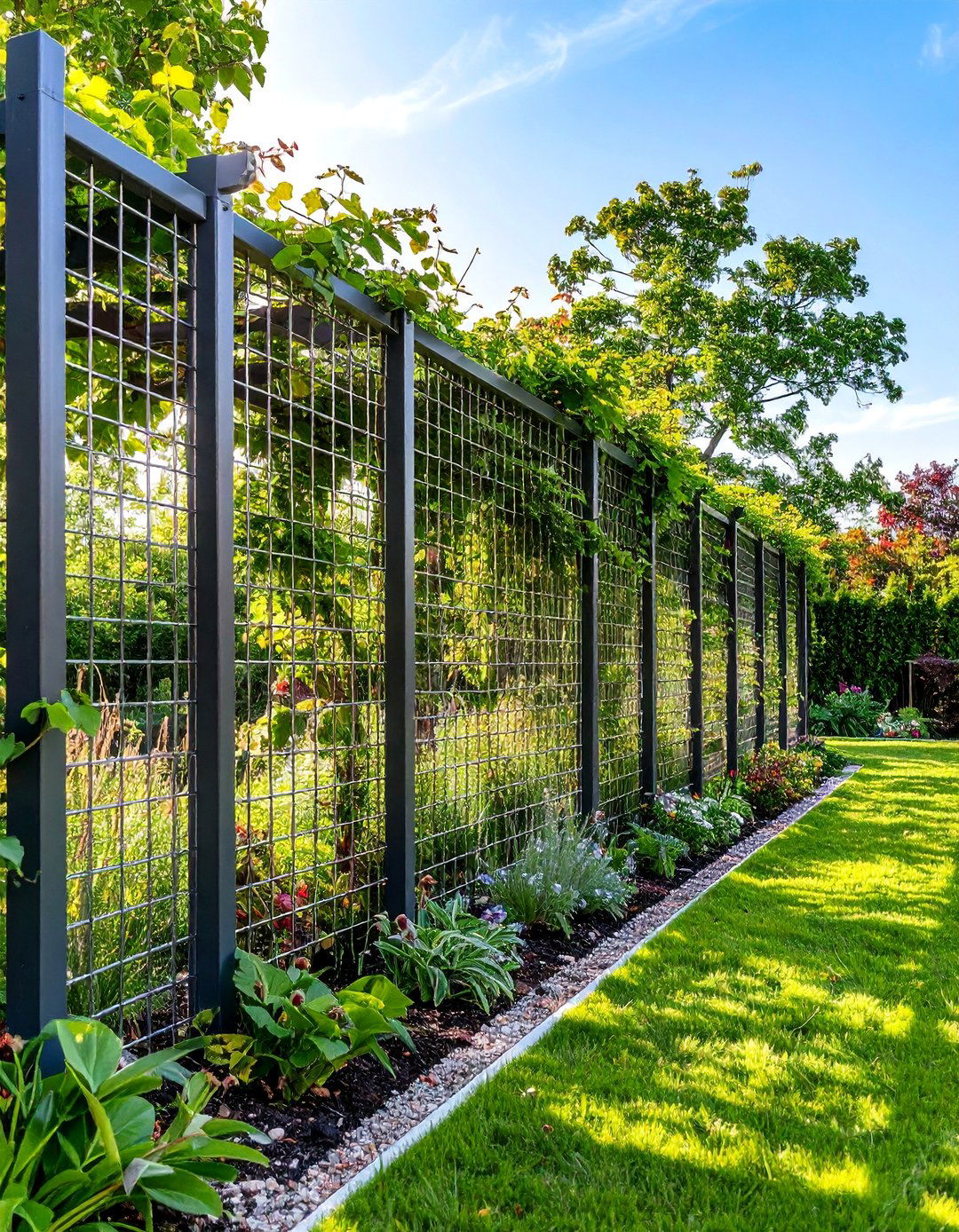
Install welded wire panels vertically between sturdy posts to create a permanent growing wall for perennial garden areas. Use 6-foot panels with 2x4-inch openings for optimal plant support and access. Mount panels to pressure-treated posts set 3 feet deep for stability. This commercial-grade system provides decades of reliable service while supporting the heaviest fruit loads. The grid pattern accommodates various training methods from simple tying to complex espalier techniques. Paint or powder-coat the wire for enhanced appearance and corrosion resistance in harsh climates.
23. Expandable Tower Cage System

Design a modular tower system using interlocking sections that can be added as plants grow taller throughout the season. Start with a base section and add additional rings or levels as needed. Use materials like PVC pipe with slip-fit connections or wooden frames with removable pins. This adaptive design prevents the need to disturb established plants while providing continuous support for indeterminate varieties that may reach 10 feet or more. The expandable feature accommodates different growth rates and allows customization for various tomato cultivars within the same garden.
24. String and Stake Combination Method
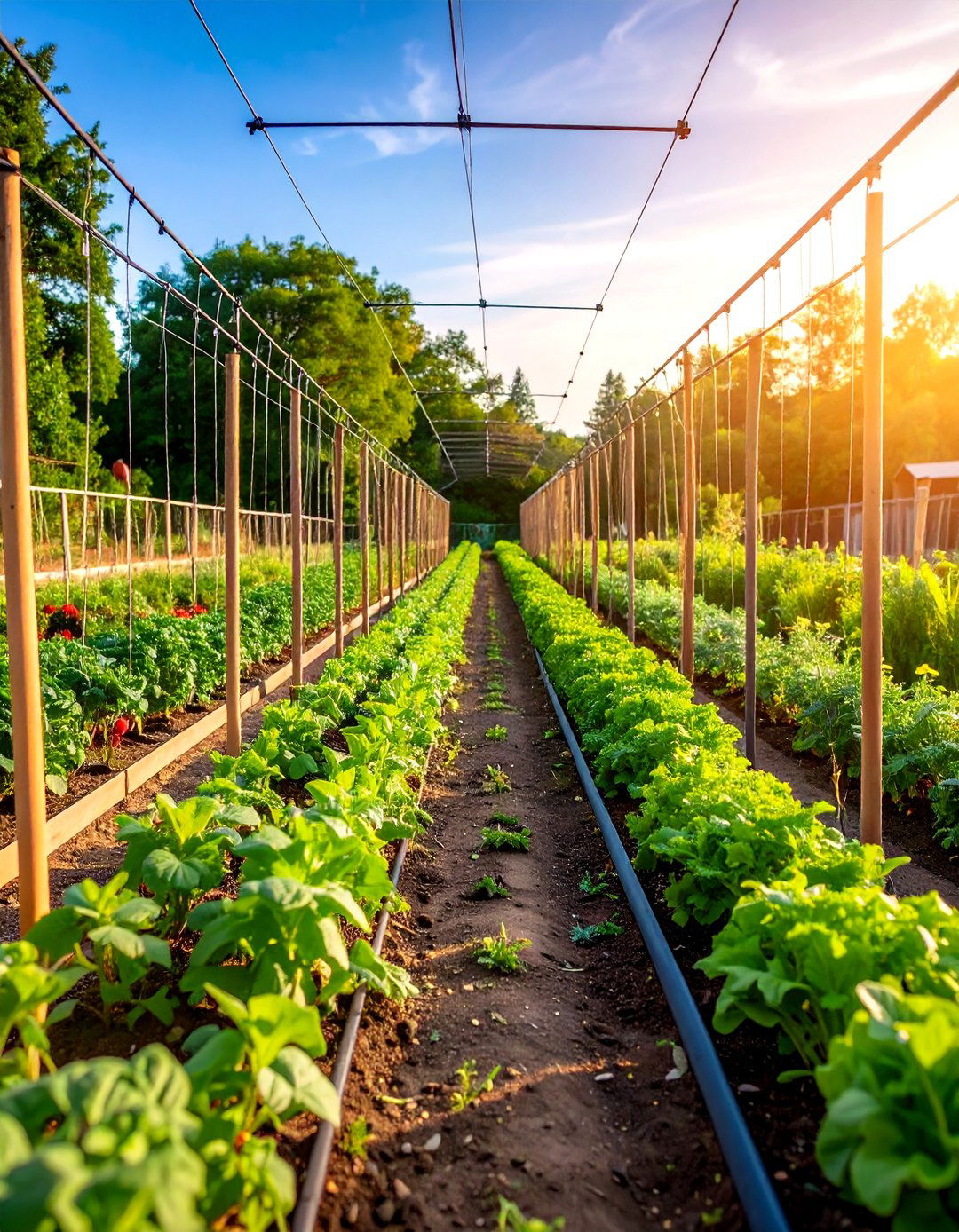
Integrate individual stakes with overhead string systems for comprehensive plant support addressing different growth stages. Drive stakes beside each plant and install overhead support wires between posts. Use the stakes for initial support and training, then transition to overhead strings as plants reach mature height. This dual-system approach provides redundant support for heavy fruit loads while accommodating various training methods. The combination ensures stability throughout the entire growing season while allowing flexibility in maintenance and harvesting approaches.
25. Multi-Level Platform Trellis

Create a tiered growing system with multiple horizontal platforms connected by vertical supports, resembling a multi-story structure. Build rectangular frames at different heights using wood or metal materials, connecting them with sturdy vertical posts. Each level provides support for different growth stages while maximizing vertical growing space. This innovative design accommodates extremely tall varieties while maintaining easy access for maintenance and harvest. The platform system can be adapted for different garden sizes and provides excellent stability for heavy-producing plants requiring substantial structural support.
Conclusion:
These 25 tomato trellis designs offer solutions for every garden situation, from simple single-plant supports to elaborate multi-plant systems. Whether you prefer natural materials like bamboo and wood, modern options like PVC and metal conduit, or hybrid approaches combining different elements, there's a perfect match for your growing needs. Consider your tomato varieties, available space, budget, and aesthetic preferences when selecting your ideal trellis design. Most importantly, choose a system that provides adequate support while allowing easy maintenance and harvesting throughout the growing season.



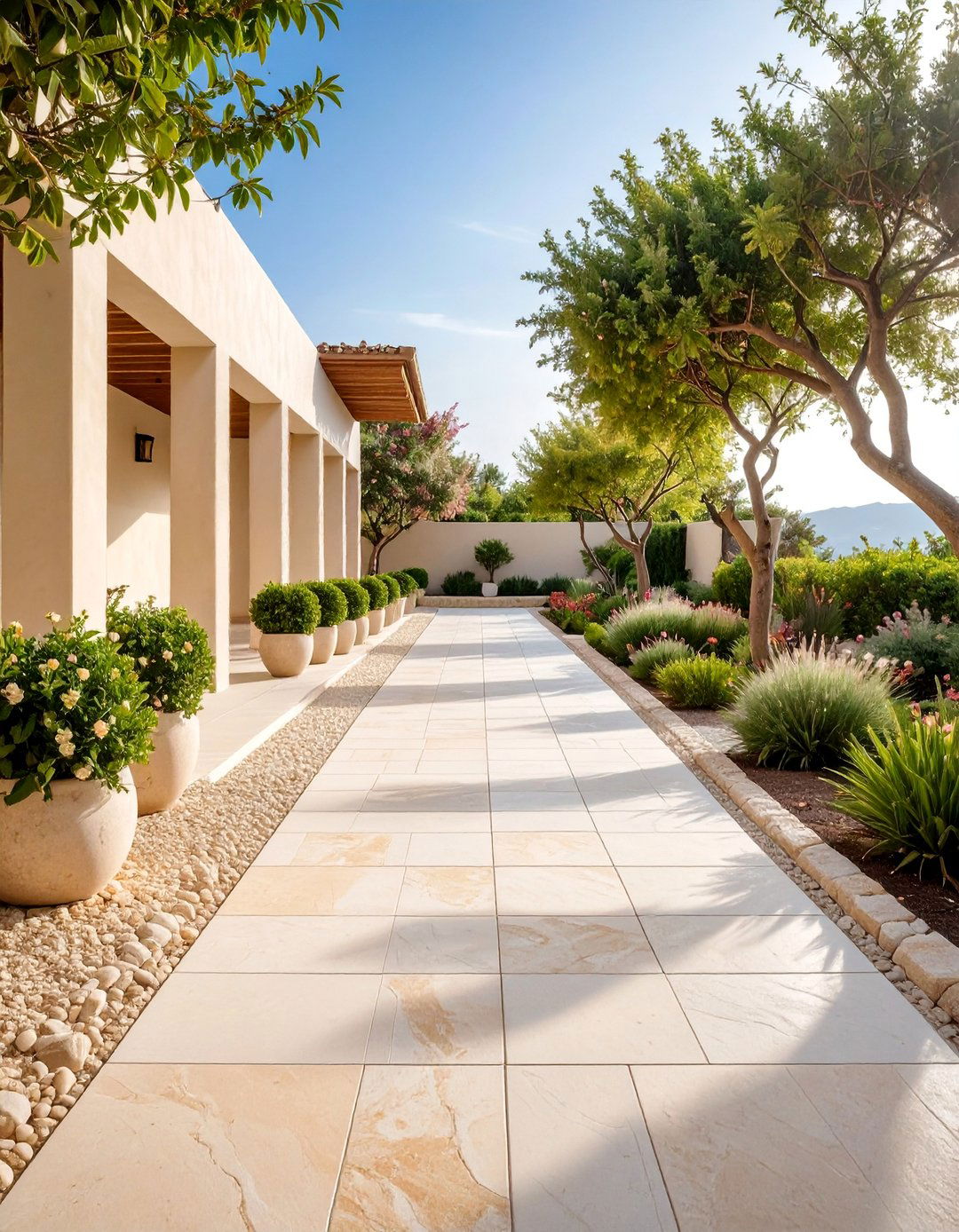





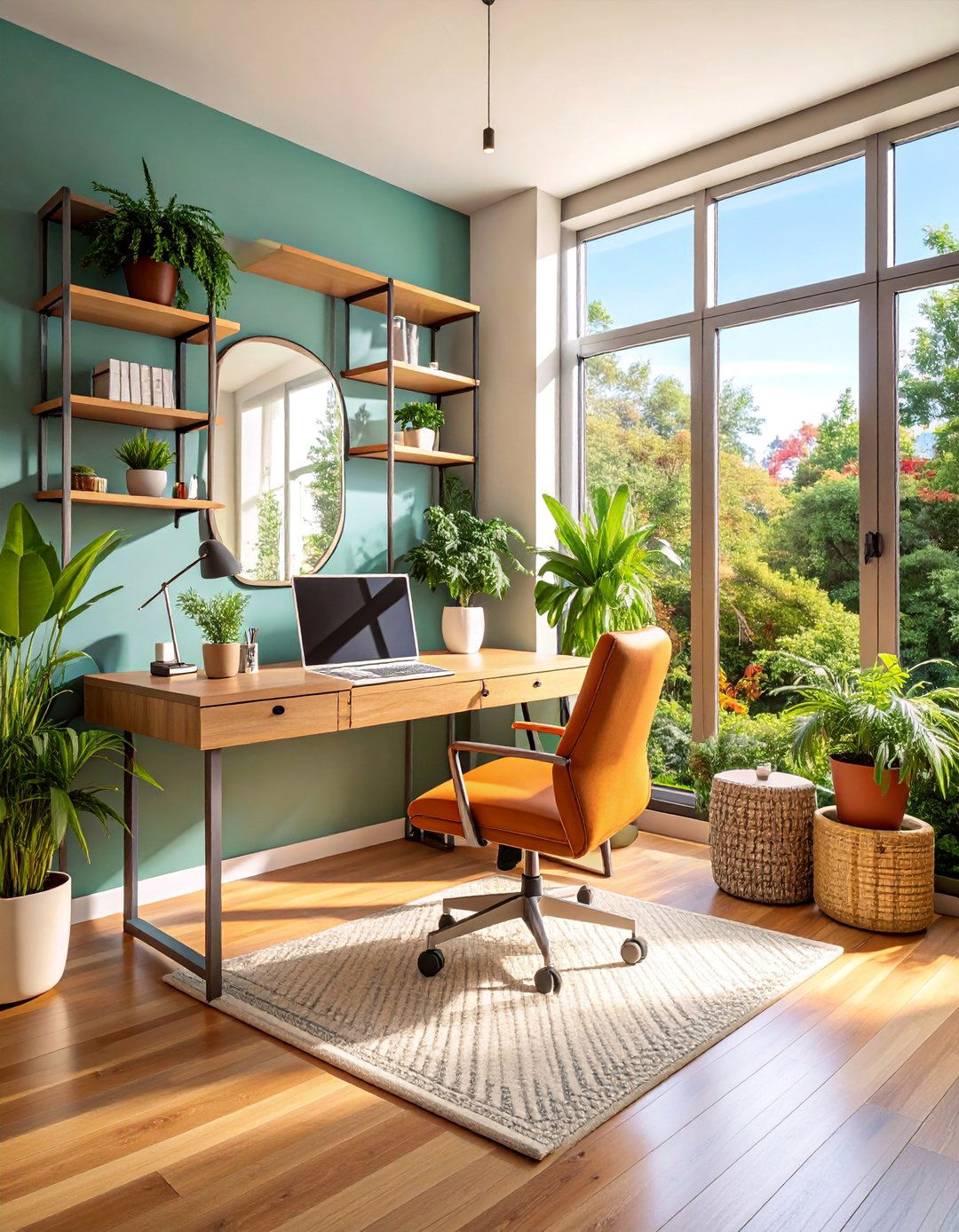

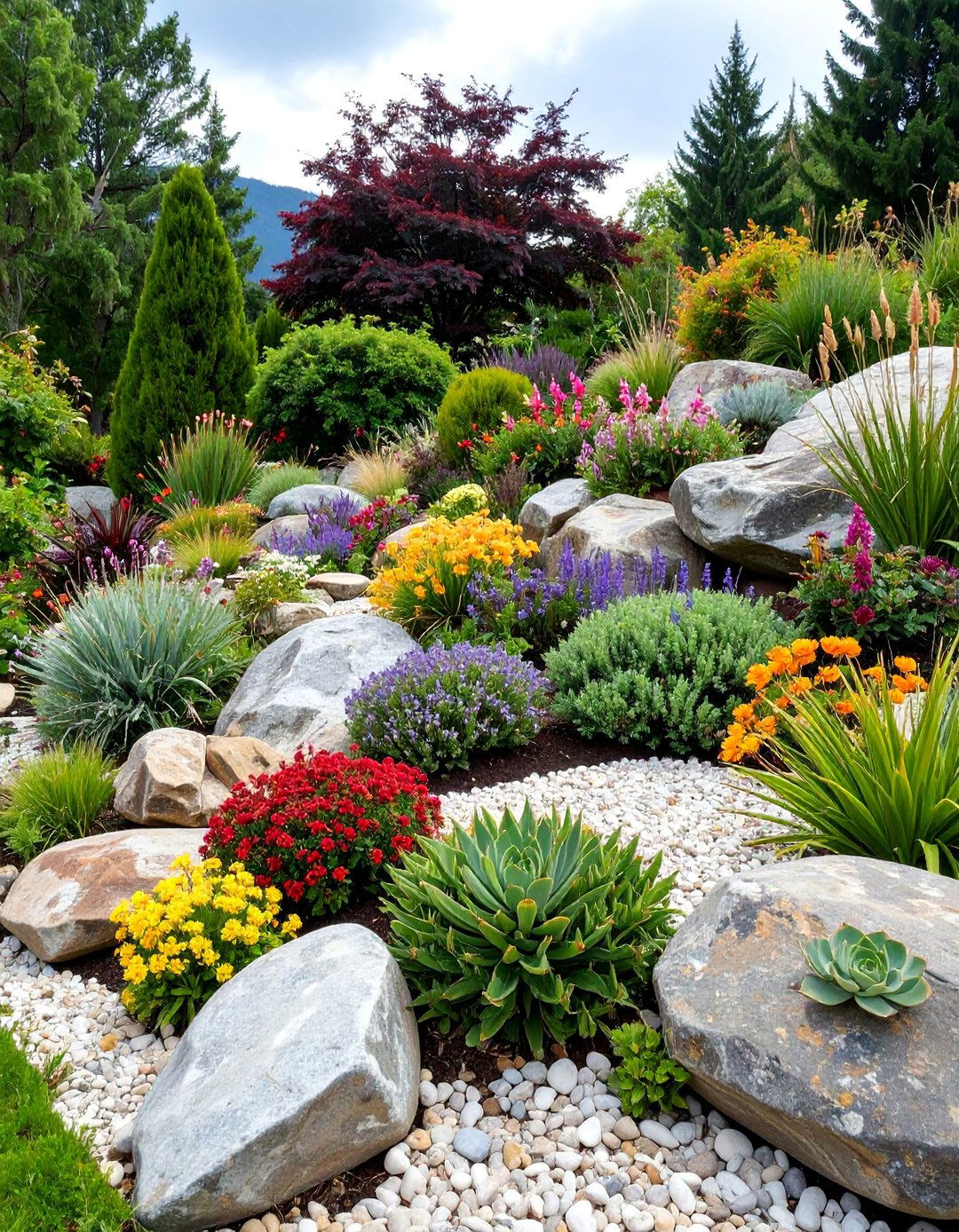
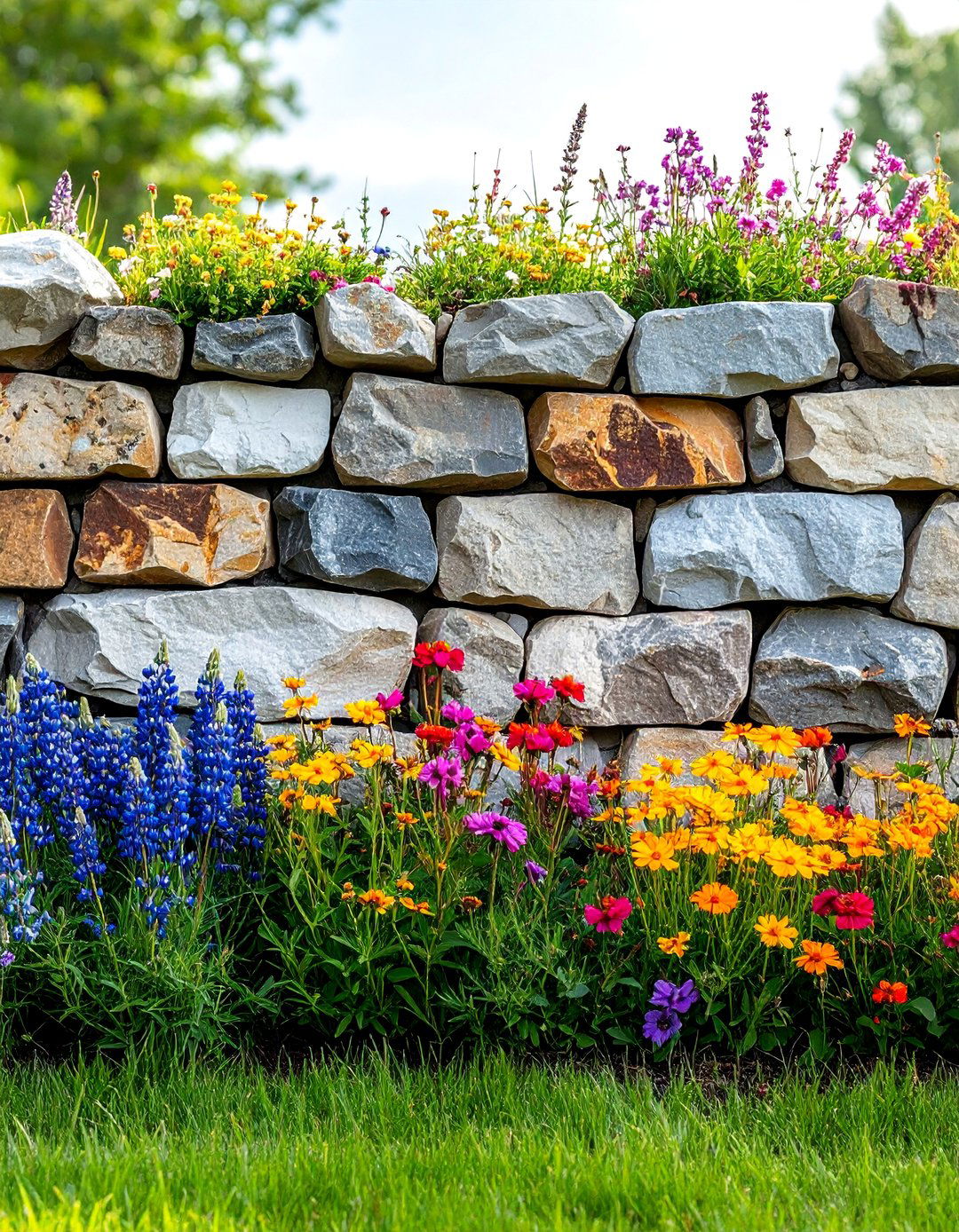
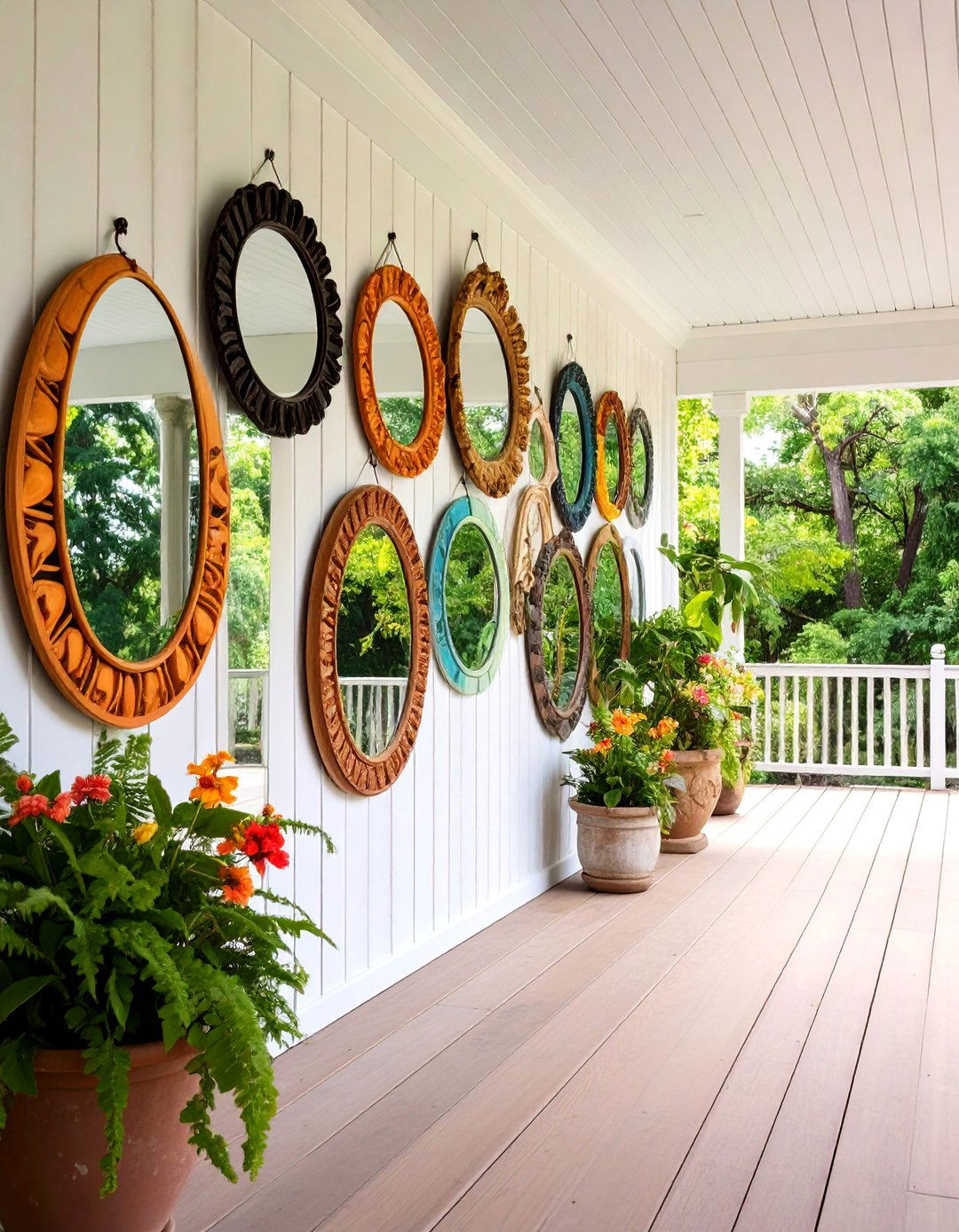

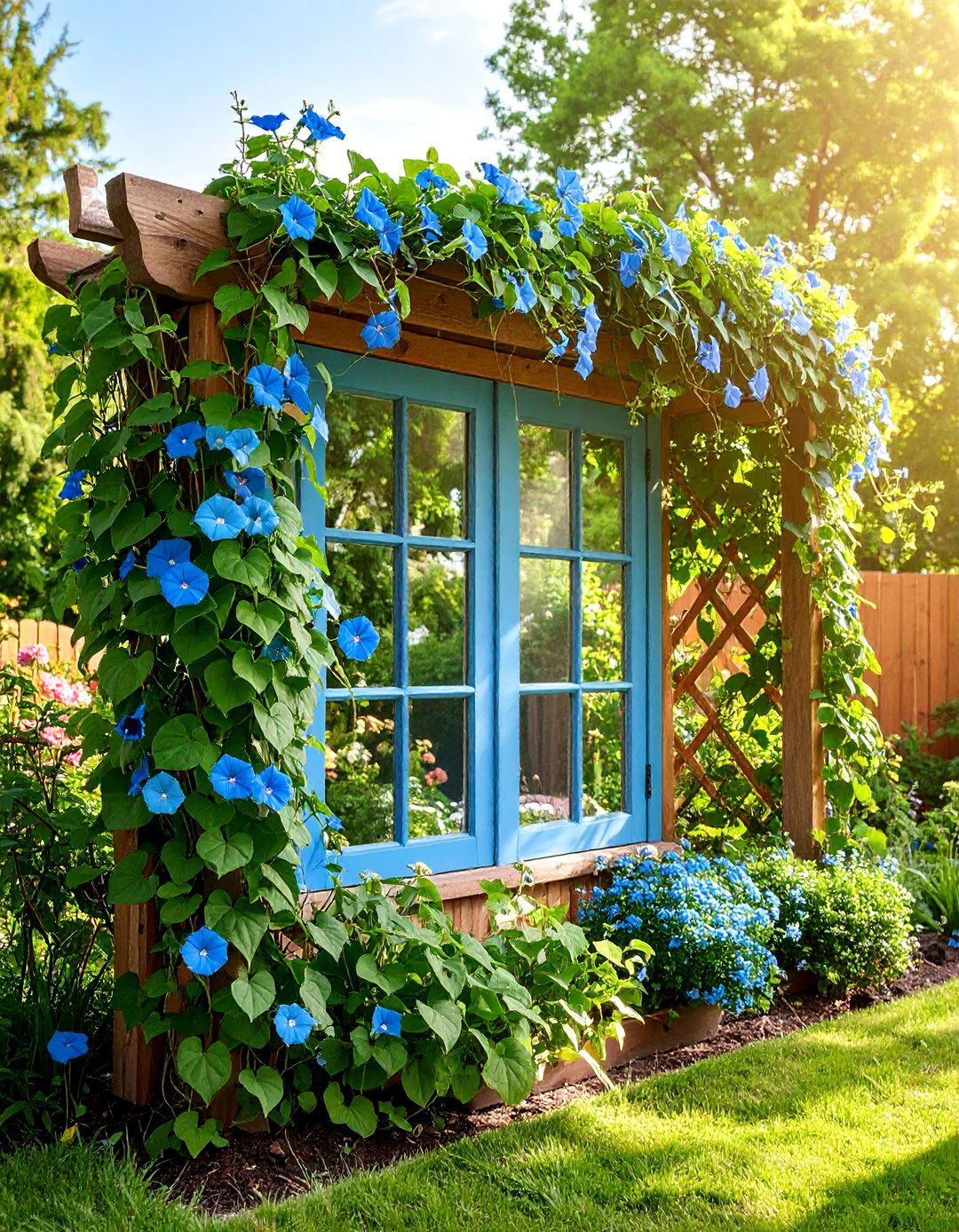
Leave a Reply